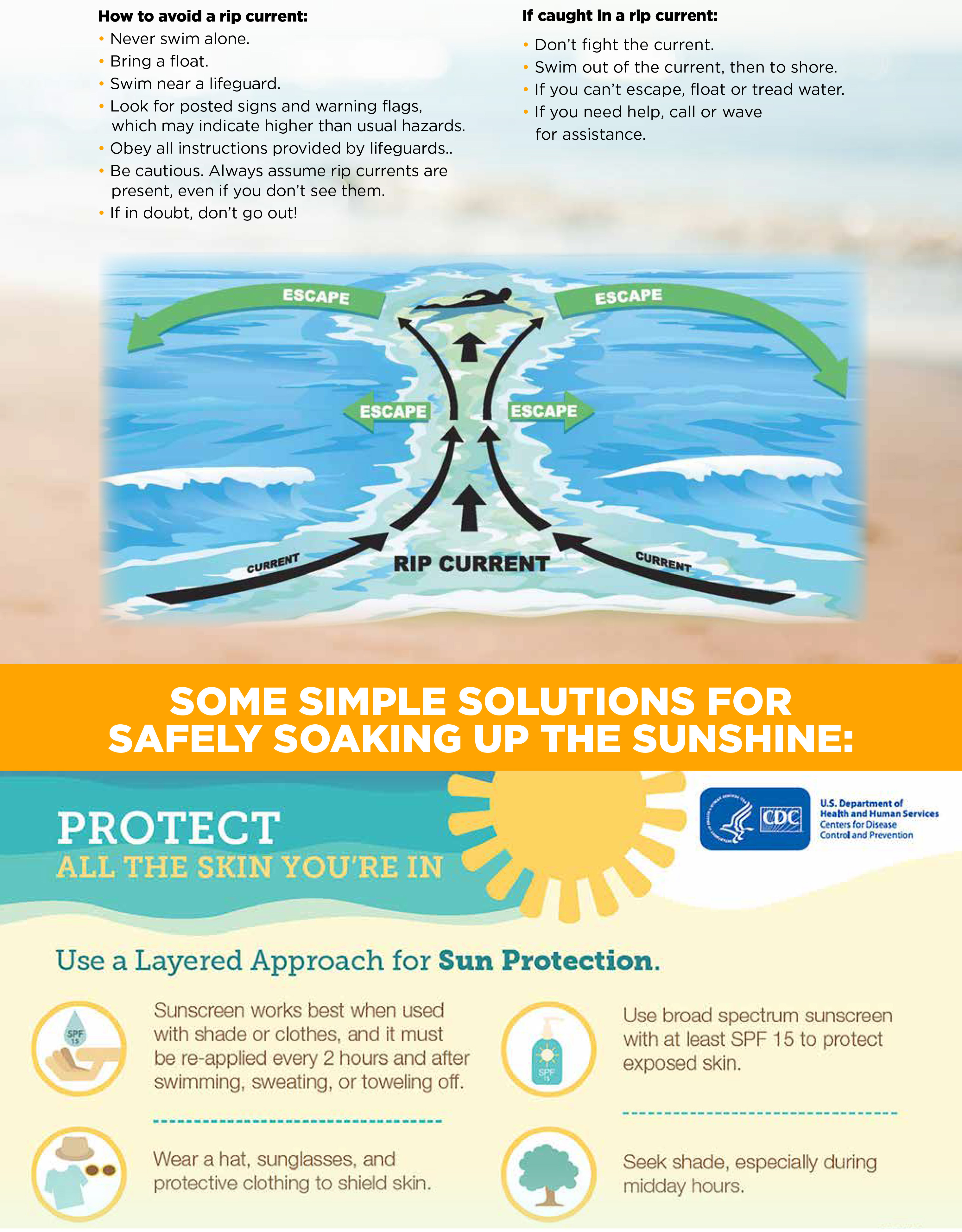 Who doesn't love Summer time. Who doesn't love the BEACH at Summer time?
We want you and your family to enjoy the Crystal Coast to the fullest.
We are here to remind you to have fun but to be safe. There are steps
you can take to help keep yourself and your loved ones safe.
Who doesn't love Summer time. Who doesn't love the BEACH at Summer time?
We want you and your family to enjoy the Crystal Coast to the fullest.
We are here to remind you to have fun but to be safe. There are steps
you can take to help keep yourself and your loved ones safe.
• Drink lots of Water.
The human body, on average, is 70% of water. This water is needed for the body to function! Salt, sweating, activity, the sun - all use this water so keep hydrated! Signs of dehydration include an increase in thirst, dizziness, confusion, fatigue and nausea.• Wear Sun Protection!
The intent of a tan can quickly runt into a painful, unattractive peeling burn. Children are especially vulnerable and MUST be protected. Apply sunscreen at 30 minutes before going into the sun, using sunscreen with a SPF of 15 or greater. Use hats and umbrellas whenever possible.• Keep Your Child in Site!
Designate a Water Watcher when your child is swimming. Establish an eye catching beacon for your location, like a colorful umbrella. Keep your children hydrated and protected with sunscreen.• Be Cautious.
You may see Stingrays, Jellyfish, Oyster Shells and Fish Hooks!- Stingrays have a sharp barb that can impale and cause extreme pain. You will need to be evaluated by a medical professional if the pain is extreme or the barb is still in the skin.
- Jellyfish stings are also quite painful. Treat with a vinegar soak for 15-30 minutes. Do NOT use regular water as it causes continued release of the toxin. Keep an eye out for signs of an allergic reaction such as difficulty breathing.
- Oysters are razor like shells that live in mud or deep water. Jumping into water with oyster shells will result in painful cuts. Medical treatment is needed to evaluate shell remains and to treat possible infection. A tetanus booster may be needed. Protect your feet when going into the water and be aware if you could be entering oyster habitat.
Yellow Flags

Yellow flags indicate moderate hazards, and that the public should use caution in the ocean. In Emerald Isle, even the calmest of days on the beach can pose an inherent risk when entering the ocean and the public is always advised to use caution.
Red Flags

Red flags indicate dangerous rip current activity is expected and rip currents are likely to be stronger and more frequent. It is recommended that you stay out of the water.
Double Red Flags

Double red flags indicate the ocean is closed for swimming and you can be fined or arrested for entering the water.
Purple Flags

Purple flags indicate an abundance of potentially hazardous marine life in the vicinity, including Portuguese man-o-war, jellyfish, and other creatures. The town will fly these flags as needed in specific locations, however, the use of purple flags is relatively rare.
We give a rip about safe swimming.
What is a rip current?
Rip currents are channeled currents of water flowing away from shore at surf beaches. They typically extend from near the shoreline, through the surf zone and past the line of breaking waves. (The surf zone is the area between the high tide level on the beach to the seaward side of breaking waves.)
How to identify rip current:
Signs that a rip current is present are very subtle and difficult for the average beach-goer to identify. Look for differences in water color or water motion, incoming wave shape or breaking point, and channels of churning, choppy water.
IF CAUGHT IN A RIP CURRENT - REMAIN CALM AND SWIM PARALLEL TO THE SHORE.



